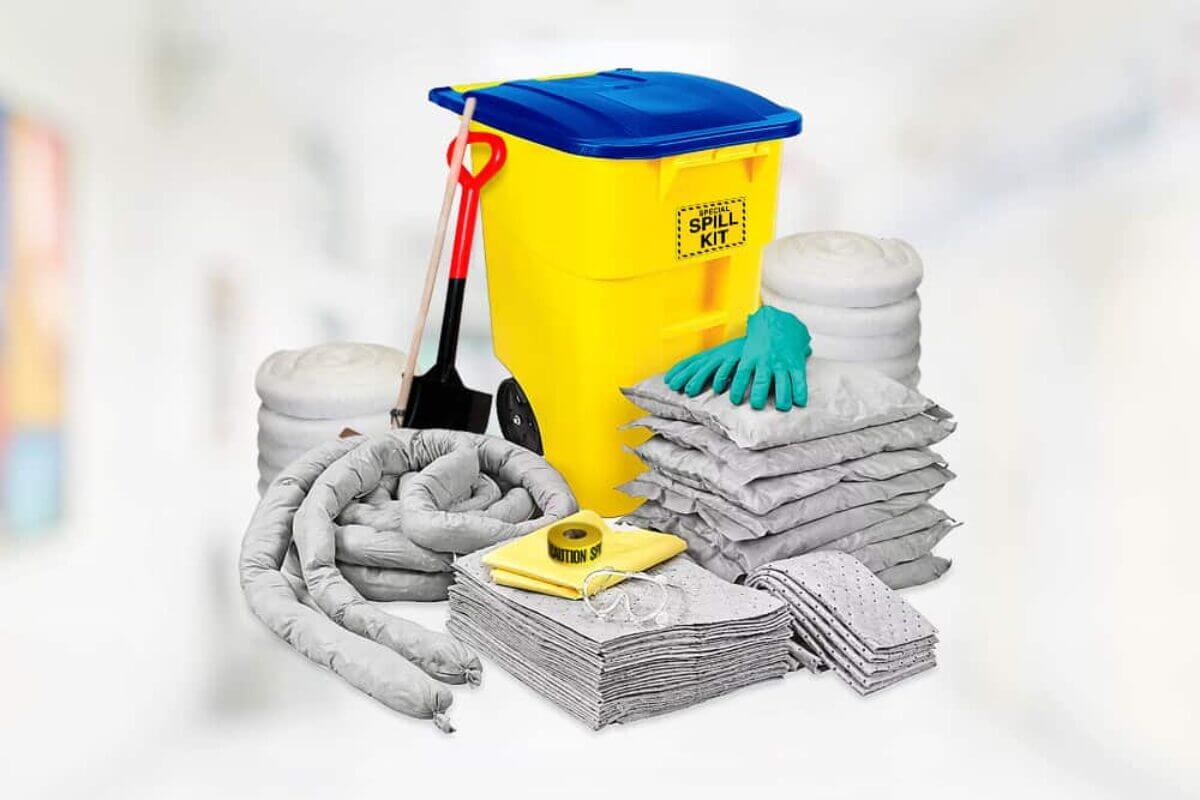Which Substances Would Require the Use of a Spill Kit?

The presence of hazardous substances in various industries poses substantial risks to human safety and the environment. Accidental spills of these substances can lead to serious consequences that impact not just the immediate surroundings but also endanger public health. Therefore, implementing effective spill response measures becomes vital for minimising the possible harm. Additionally, timely and efficient action can help reduce the long-term effects on ecosystems.
One key component of a robust spill response plan is the use of spill kits. But which substances need these kits? Understanding the types of substances that need special attention helps ensure proper readiness and quick response in emergencies. This blog aims to explore different kinds of substances that mandate the use of spill kits and emphasise the significance of being equipped to manage potential spills effectively.
What Are Spill Kits?
Spill kits have special materials made to quickly and safely soak up accidental leaks, overflows, or spills. They are necessary for cleaning up various substances, including hazardous materials and pollutants, that could cause harm or damage if spilled. These substances can be broadly categorised into chemical, oil/fuel, water-based liquids, bodily fluids, and even some food products.
Substances That Usually Require a Spill Kit
A spill kit is essential for various substances, including oils, fuels, chemicals, solvents, and even bodily fluids. Specifically, any substance that could pose a risk, cause ecological damage, or require special handling for clean-up should have a spill kit available.
Oils and Fuels
Hydrocarbons such as fuels, oils, diesel, and solvents necessitate the use of oil-only spill kits. These kits are designed to absorb these substances, even in wet conditions, because they are hydrophobic.
Chemicals
This category incorporates a broad range of chemicals (often grey-coded), including acids, alkalis, solvents, pesticides, and other hazardous substances.
Solvents
Solvents are liquids used to dissolve other substances. They can often be volatile or corrosive, necessitating spill kits that can handle these potential hazards.
Water-Based Liquids
Even seemingly harmless large water spills can cause damage and hazards. Coolants, cutting fluids, and other non-hydrocarbon liquids require specialised spill kits.
Bodily Fluids
A spill kit designed for biohazards is necessary in settings where blood and other bodily fluids could be spilled.
Sewage and Waste Materials
Spill kits are needed to properly clean up and dispose of these potentially polluted substances, avoiding the spread of disease and environmental damage.
Food Products
Spill kits are required for food spills, especially liquids or items that can cause contamination, such as cooking oils in a food preparation area.
Other Hazardous Materials
A spill kit should be available for any substance that could pose a risk, cause ecological damage, or require special handling for clean-up.
Types of Spill Kits for Different Substances
Oil and Fuel (Hydrocarbon) Spill Kits
These kits are mainly designed for spills involving oil, fuel, and other petroleum-based liquids. They typically contain absorbent materials, socks, and disposal bags for cleaning up hydrocarbons, which are important for the automotive, marine, and industrial industries.
Chemical (HAZCHEM) Spill Kits
These are tailored for handling hazardous chemicals, acids, alkalis, solvents, and other corrosive or toxic substances. These kits come equipped with personal protective equipment (PPE) and neutralising agents to ensure safe clean-up operations in laboratories and production facilities.
Marine Spill Kits
These kits are specially designed for controlling spills in marine or freshwater environments, including oil and chemical spills. They have floating barriers and absorbent materials to reduce environmental harm in coastal areas and water bodies.
Biohazard Spill Kits
These kits clean up spills of bodily fluids, blood, and biologically hazardous substances. They often include protective equipment, cleaning supplies, and hazardous waste bags, which are essential for healthcare and emergency services.
Mercury Spill Kits
Specifically designed for managing mercury spills, which are common in certain medical and laboratory settings. These kits usually include specialised tools for safely collecting mercury droplets and agents to control mercury vapour, ensuring protection against exposure.
Battery Acid Kits
These types of kits usually handle battery acid spills, corrosive liquids found in most lead-acid batteries, which can be harsh and unsafe. They include substances like absorbent pads, neutralisers, and personal protective equipment (PPE) that neutralise harmful materials, materials that soak up spills, and protective gear, ensuring safe cleanup and preventing environmental damage.
Maintenance Spill Kits
Universal or general-purpose kits are suitable for various spills, including hydrocarbons and non-corrosive liquids. These kits are crucial for maintenance in numerous workplaces, like construction, manufacturing, and food service, making sure you are prepared for any small spills that happen.
Other Specialised Kits
Such kits may include kits for urine and vomit spills, cytotoxic drug spills, and even antistatic spills. These kits are designed for specific situations and include the necessary absorbents, containment tools, and protective gear to handle different spill risks effectively.
How to Choose the Right Spill Kit?
To select a suitable spill kit, you need to assess the types of liquids handled, the potential volume of spills, and the specific hazards involved.
Identify the Types of Liquids
Oil-only Spills: Use oil-only spill kits, usually blue or white, for cleaning up oils, fuels, and solvents. They repel water and absorb only oil spills.
Chemical Spills: For acids and bases, it is necessary to choose yellow chemical spill kits that can handle these liquids safely.
Universal/Maintenance Spills: For a range of liquids, including coolants, water, and non-aggressive chemicals, you must select universal or maintenance spill kits (often grey).
Determine Potential Spill Volume
Evaluate the Worst-Case Scenario: Consider the largest volume of liquid that could spill from a single source or tank.
Choose an Appropriate Size of Kit: Choose a spill kit that can manage the biggest spill, or use several kits for different areas.
Consider Storage Location and Portability
Smart Strategic Placement: Ensure spill kits are accessible in high-risk zones. This step enables you to address spills quickly, ensuring a safer environment for all.
Portability Options: If kits are not stored strategically, it is better to choose kits which can be easily moved throughout the facility.
Personal Protective Equipment (PPE)
Consider your Facility’s Needs: Assess whether gloves, goggles, and other PPE should be included in the spill kit.
Undertake a Risk Assessment: Ensure the included PPE is suitable for the specific risks related to the liquids you handle.
Containment and Disposal
Containment Tools: Make sure the kit includes tools to stop the spill, such as barriers, booms, or drain covers.
Disposal Bags: Ensure the kit has bags for disposing of used absorbents safely.
Specific Kit Features
Absorbent Materials: Choose absorbents that are compatible with the liquids you handle, such as pads, socks, booms, pillows, or granules.
Drain Covers: For larger spills or when dealing with potential drainage issues, consider kits with drain covers to stop the spill from entering drainage systems.
Instruction Guides: Ensure the kit includes clear instructions on how to respond to a spill.
Conclusion
In conclusion, hazardous materials like chemicals, oils, and harmful liquids usually require a spill kit. A kit should be accessible wherever these substances are used or stored. You can reduce environmental damage and protect the health and safety of the surroundings with quick and proper responses. Regular training of staff members can improve spill response effectiveness.









 Home
Home  Checkout
Checkout